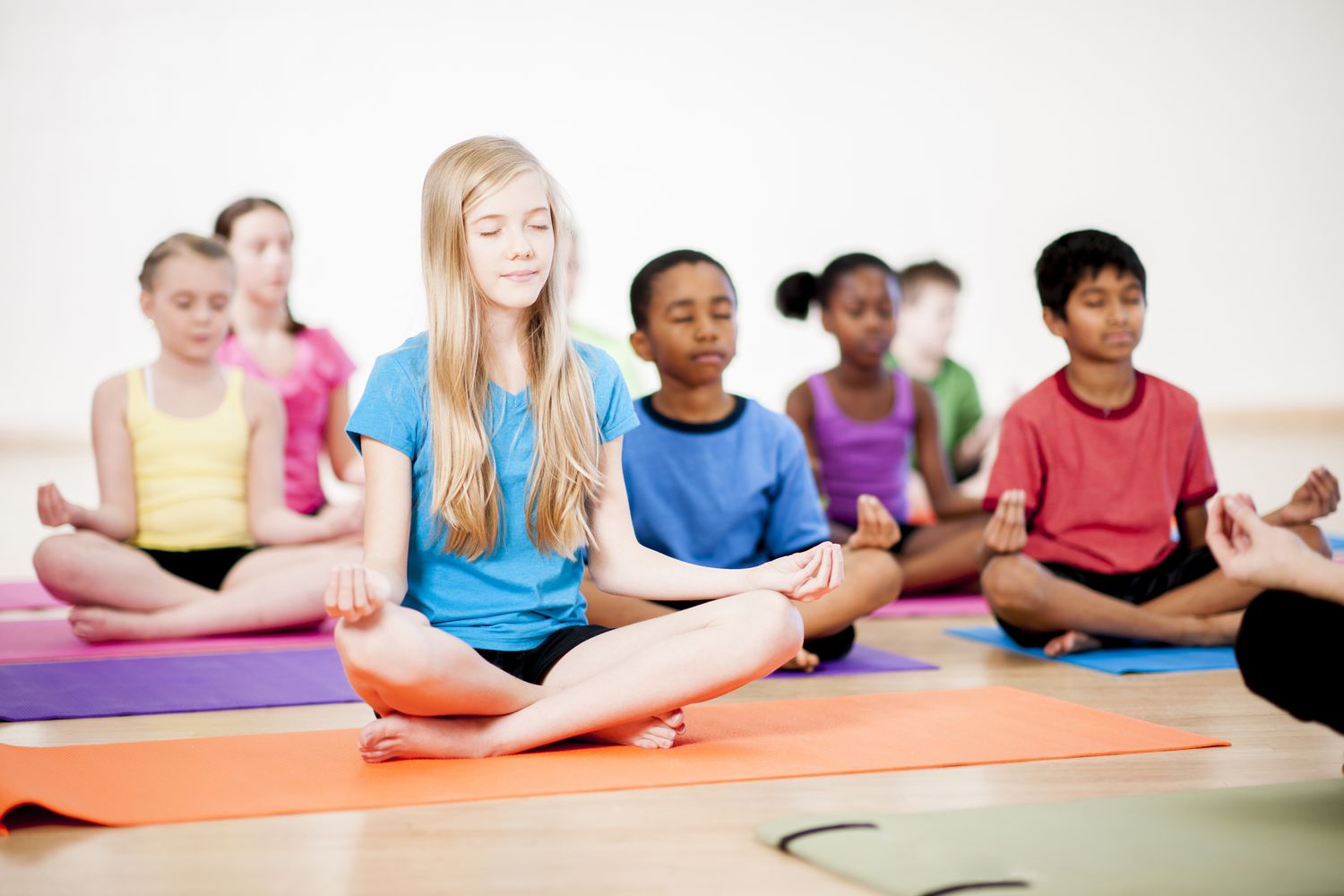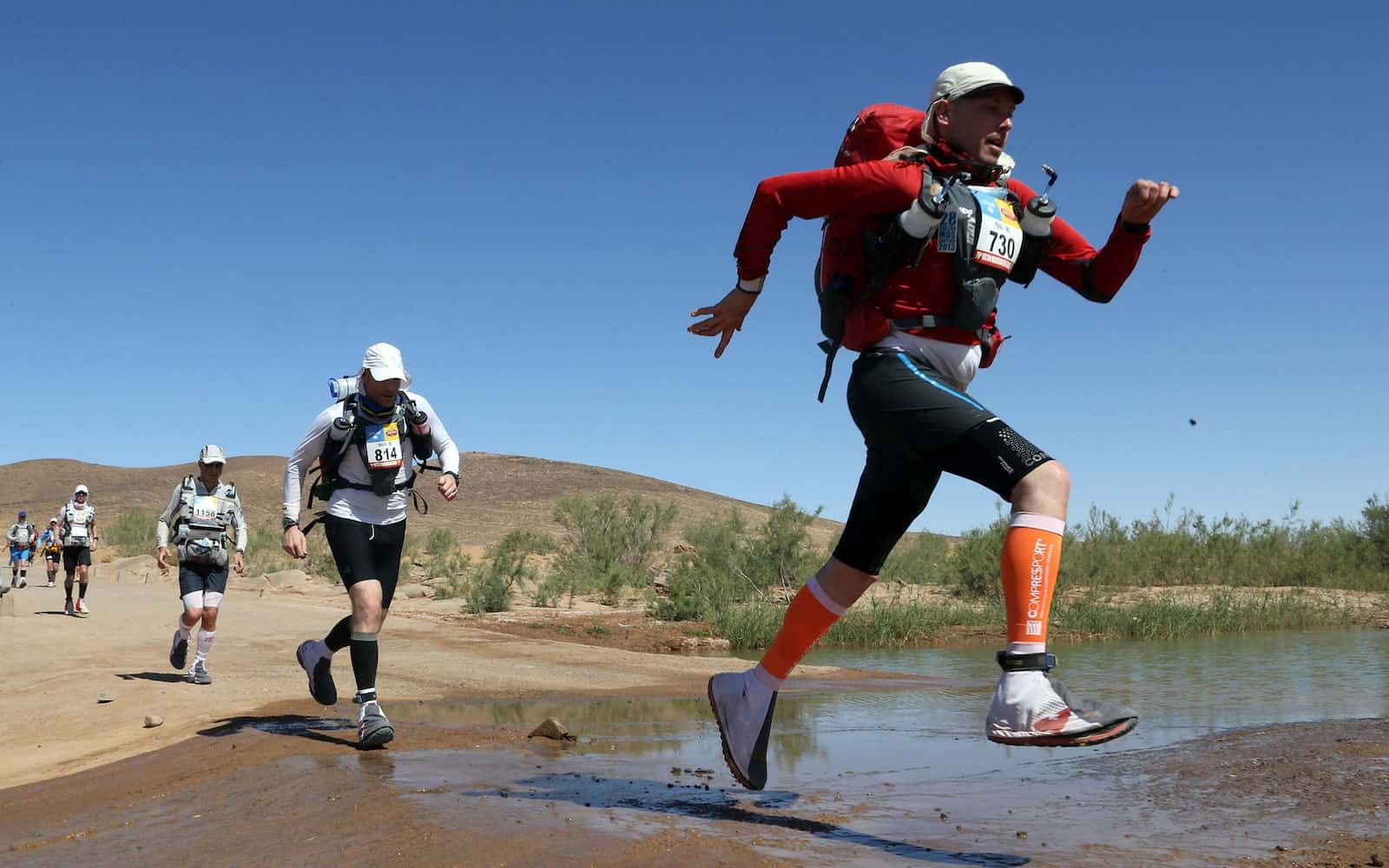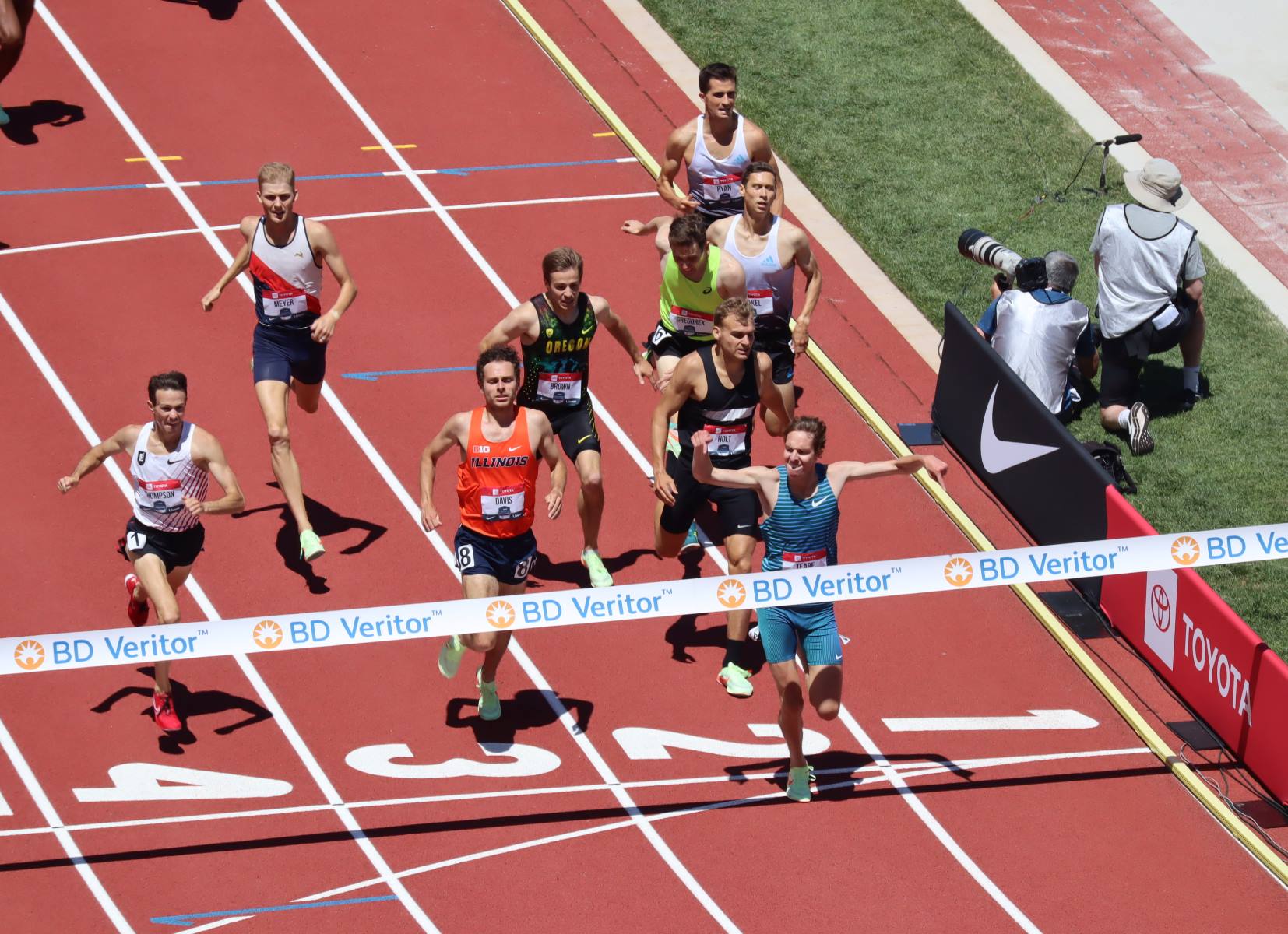Home>Misc>Featured>What Is True About Mindfulness In Sport And Exercise


Featured
What Is True About Mindfulness In Sport And Exercise
Published: September 29, 2023
Discover the featured benefits of mindfulness in sport and exercise, enhancing focus, performance, and overall well-being. Uncover the true power of mindfulness for athletes and fitness enthusiasts.
Introduction
Mindfulness, a practice rooted in ancient Buddhist tradition, has gained significant popularity in recent years for its numerous benefits in promoting overall well-being and mental clarity. While initially associated with meditation and stress reduction, mindfulness has also found its way into the realm of sport and exercise.
Mindfulness in sport and exercise refers to the deliberate awareness and non-judgmental focus on present moment experiences during physical activities. It involves paying attention to bodily sensations, thoughts, and emotions without being consumed by them. By practicing mindfulness, athletes and individuals engaging in exercise can optimize their performance, enhance their mental and emotional well-being, and prevent injuries.
Whether you are an elite athlete, a fitness enthusiast, or someone seeking to incorporate mindfulness into your exercise routine, understanding the concept and benefits of mindfulness in sport and exercise is essential.
This article explores the concept of mindfulness and its application in the context of sport and exercise. It will delve into the various benefits of practicing mindfulness, such as enhanced focus, improved performance, stress reduction, and injury prevention. Strategies and techniques for incorporating mindfulness into training and competition will be discussed, along with practical tips for integrating mindfulness into pre- and post-physical activity routines. Finally, the article will address the challenges and limitations of mindfulness in sport and exercise, such as individual differences and lack of awareness.
By the end of this article, you will have a comprehensive understanding of the importance of mindfulness in sport and exercise, along with practical tools to incorporate mindfulness into your own athletic or exercise endeavors.
The Concept of Mindfulness
Mindfulness can be defined as a state of non-judgmental awareness of the present moment. It involves bringing attention to immediate sensory experiences, thoughts, and emotions, without getting caught up in judgments or attempting to change them. The practice of mindfulness encourages acceptance and a non-reactive stance towards internal and external experiences.
In the context of sport and exercise, mindfulness involves directing one’s attention to the physical sensations of the body, the movements being performed, and the mental and emotional states that arise during physical activity. It requires athletes and individuals engaging in exercise to be fully present and engaged in the moment, rather than being preoccupied with past or future events.
One of the key components of mindfulness is cultivating a non-judgmental attitude. This means observing thoughts, feelings, and physical sensations without labeling them as good or bad. By developing this non-judgmental awareness, athletes can free themselves from the burden of self-criticism and performance anxiety, allowing them to fully immerse themselves in the act of participating in sport or exercise.
Mindfulness also involves developing the skill of concentration, which is crucial for maintaining focus amidst distractions. By training the mind to stay present and anchored to the current experience, athletes can enhance their ability to concentrate on their movements, make quick decisions, and respond to changes in the environment.
Furthermore, mindfulness emphasizes the importance of self-compassion and kindness towards oneself. It encourages athletes and individuals engaging in exercise to cultivate a positive and supportive inner dialogue, fostering a sense of self-worth and motivation.
Overall, the concept of mindfulness in sport and exercise encompasses the cultivation of present moment awareness, non-judgment, concentration, and self-compassion. By practicing mindfulness, athletes and individuals can tap into their full potential, both physically and mentally.
Benefits of Mindfulness in Sport and Exercise
The practice of mindfulness in sport and exercise offers a wide range of benefits for athletes and individuals engaging in physical activity. From enhancing focus and concentration to improving performance and decision making, mindfulness plays a significant role in optimizing both mental and physical capacities.
Enhanced Focus and Concentration: Mindfulness practice trains the mind to stay present and focused on the task at hand. By redirecting attention to the sensations of the body, athletes can minimize distractions and maintain concentration during training or competition. This heightened focus allows for better execution of movements, improved reaction times, and increased awareness of one’s surroundings.
Improved Performance and Decision Making: Mindfulness helps athletes make mindful choices in the moment rather than being influenced by past experiences or future outcomes. By staying present, athletes can make better decisions, adapt to unexpected situations, and perform at their optimal level. Mindfulness also enhances self-awareness, which allows athletes to recognize and address any areas of weakness or imbalances that may be affecting their performance.
Stress Reduction and Emotional Regulation: Engaging in sport and exercise can often bring about stress and intense emotions. Mindfulness helps individuals manage their stress levels by increasing their ability to regulate their emotions. By cultivating a non-reactive and accepting mindset, athletes can respond to stressful situations in a calm and composed manner. This not only improves performance but also promotes emotional well-being and overall mental health.
Injury Prevention and Rehabilitation: Mindfulness practice can also contribute to injury prevention and rehabilitation. By developing an increased awareness of the body and its sensations, athletes can detect potential injuries or imbalances early on. Additionally, mindfulness can aid in the recovery process by promoting relaxation, reducing muscle tension, and increasing body awareness during rehabilitation exercises.
Overall, the benefits of mindfulness in sport and exercise are vast. Whether it’s improving focus and concentration, enhancing decision making, reducing stress, or preventing injuries, the practice of mindfulness offers athletes and individuals engaging in exercise valuable tools for optimizing their performance and well-being.
Enhanced Focus and Concentration
In the world of sport and exercise, focus and concentration are essential for optimal performance. Mindfulness practice can greatly enhance these cognitive abilities, allowing athletes to perform at their best and excel in their respective disciplines.
Mindfulness Anchors: One of the key techniques in developing enhanced focus and concentration is the use of mindfulness anchors. These anchors can be specific points of focus, such as the breath, a particular movement, or a specific sensation in the body. By consistently bringing attention back to these anchors whenever the mind wanders, athletes can train their minds to stay present and fully engaged in the activity.
Minimizing Distractions: Through mindfulness practice, athletes become more adept at recognizing and managing distractions. They learn to observe distractions without judgment and refocus their attention on the task at hand. By reducing the influence of external and internal distractions, athletes can maintain a heightened level of concentration throughout training and competition.
Flow State: The state of flow, often referred to as being “in the zone,” is characterized by complete absorption and effortless performance. Mindfulness can facilitate the entry into this state by helping athletes maintain a laser-like focus on the present moment. When athletes are fully immersed in their actions, they experience enhanced concentration and heightened performance.
Improved Cognitive Functioning: Regular mindfulness practice has been shown to improve overall cognitive functioning, including attention and working memory. With enhanced cognitive abilities, athletes are better able to process information quickly, make split-second decisions, and react confidently to the demands of their sport or exercise.
Mental Resilience: Mindfulness cultivates mental resilience, allowing athletes to bounce back from mistakes or setbacks quickly. By practicing non-judgment and acceptance, athletes can let go of negative thoughts or self-criticism that may distract them from maintaining focus. This resilience helps athletes stay present and focused, even in high-pressure situations.
Enhanced focus and concentration are crucial for achieving peak performance in sport and exercise. Through the practice of mindfulness, athletes can develop these skills, minimize distractions, enter the state of flow, and improve their cognitive functioning. By honing their ability to stay present and fully engaged in the moment, athletes can unlock their full potential and achieve optimal performance.
Improved Performance and Decision Making
In the world of sport and exercise, performance is paramount. Mindfulness practice can have a significant impact on an athlete’s performance, helping them make better decisions, adapt to changing situations, and perform at their highest level.
Mindful Decision Making: One of the key benefits of mindfulness is its ability to improve decision-making skills. By staying fully present and aware, athletes are better able to assess the situation, consider different options, and make informed choices. This heightened sense of awareness allows athletes to act with intention and purpose, increasing the likelihood of making optimal decisions during training or competition.
Adaptability and Flexibility: Mindfulness practice fosters adaptability and flexibility in athletes. By maintaining a present moment focus, athletes can quickly adapt to unexpected changes or challenges in their sport or exercise environment. This adaptability allows for more efficient and effective adjustments, enabling athletes to perform at their best in any situation.
Peak Performance State: Mindfulness can help athletes enter into a state of flow, where they experience effortless and optimal performance. Through mindfulness practice, athletes learn to let go of self-doubt, distractions, and negative thoughts, allowing them to fully engage and commit to their actions. By being fully absorbed in the present moment, athletes can tap into their skills and abilities and achieve peak performance.
Increased Self-Awareness: Mindfulness practice helps athletes develop a deeper understanding of their own strengths, limitations, and preferences. This self-awareness allows athletes to make more informed choices regarding training methods, competition strategies, and even selecting the right sport or exercise modality that aligns with their unique qualities. By matching their choices to their abilities and preferences, athletes can optimize their performance and enjoyment.
Improved Focus on Technique: Mindfulness practice encourages athletes to pay attention to the specifics of their movements and technique. By directing their focus on the sensations and mechanics of their actions, athletes can refine their movements and improve their overall skill level. This heightened focus on technique leads to more efficient movement patterns and ultimately better performance.
Improved performance and decision making are essential for success in sport and exercise. By incorporating mindfulness into their training and competition routines, athletes can enhance their decision-making skills, adapt to changing circumstances, and experience the flow state of optimal performance. With mindfulness, athletes can unlock their full potential and achieve their goals.
Stress Reduction and Emotional Regulation
Engaging in sport and exercise can often bring about intense stress and emotions. The practice of mindfulness can play a significant role in reducing stress levels and promoting emotional regulation, leading to improved overall well-being and performance.
Stress Reduction: Mindfulness helps individuals manage stress by cultivating a non-reactive and non-judgmental attitude towards internal and external experiences. By observing thoughts, feelings, and physical sensations without getting caught up in them, athletes can reduce the negative impact of stress on their performance and well-being. Research has shown that regular mindfulness practice can lead to lower levels of perceived stress and a more balanced response to stressors.
Emotional Regulation: Mindfulness practice cultivates emotional regulation skills, allowing athletes to effectively manage their emotions. Through mindfulness, athletes develop a greater awareness of their emotions, allowing them to recognize and acknowledge their feelings without judgment or suppression. This heightened awareness enables athletes to respond to emotions in a more adaptive and constructive way, rather than being overwhelmed or reactive.
Increased Resilience: Mindfulness promotes resilience by strengthening an athlete’s ability to bounce back from challenges or setbacks. By cultivating an accepting and compassionate mindset, athletes can navigate difficult situations with greater ease and grace. Mindfulness allows athletes to access their inner resources and find a sense of calm and stability, even in the face of adversity.
Improved Mental Well-being: Engaging in mindfulness practice has been linked to improved mental health and well-being. Regular mindfulness practice has shown to reduce symptoms of anxiety and depression, enhance self-compassion, and foster a positive outlook on life. By incorporating mindfulness into their routines, athletes can experience greater overall mental well-being, which in turn positively impacts their performance.
Positive Mindset and Confidence: Mindfulness promotes a positive mindset and boosts self-confidence in athletes. By developing an ability to observe thoughts and challenge negative self-talk, athletes can shift their mindset towards more positive and motivating thoughts. This increase in self-belief and positive thinking can have a profound impact on performance, allowing athletes to perform with greater confidence and belief in their capabilities.
By incorporating mindfulness into their sport and exercise routines, individuals can experience reduced stress levels, improved emotional regulation, increased resilience, enhanced mental well-being, and a positive mindset. The practice of mindfulness provides athletes with valuable tools to manage the psychological demands of their training and competition, allowing them to perform at their best both on and off the field.
Injury Prevention and Rehabilitation
When it comes to sport and exercise, injuries are not uncommon. However, incorporating mindfulness into training and rehabilitation programs can significantly contribute to injury prevention and aid in the recovery process.
Body Awareness: Mindfulness practice cultivates a strong sense of bodily awareness, allowing athletes to be more attuned to their movements, posture, and sensations. This heightened awareness can help detect potential imbalances or areas of weakness before they lead to injuries. By being mindful of their body’s signals and responding appropriately, athletes can make adjustments to their movements and training routines to prevent injuries.
Reduced Muscle Tension: Mindfulness can reduce muscle tension and promote relaxation, which is crucial for injury prevention. By practicing mindfulness-based relaxation techniques such as body scans and progressive muscle relaxation, athletes can release physical tension and create a more flexible and resilient body. Relaxed muscles are less prone to strains and other injuries.
Pain Management: Mindfulness techniques can be beneficial for managing pain during the rehabilitation process. By bringing awareness to sensations and using mindfulness-based pain management strategies, athletes can develop a non-reactive attitude towards pain, which can reduce suffering and enhance the rehabilitation process. Mindfulness can also help individuals better understand the connection between their mind and body, empowering them to take an active role in their recovery.
Faster Recovery: Incorporating mindfulness into rehabilitation programs can help expedite the recovery process. By directing mindful attention to the injured area, athletes can increase blood flow, promote healing, and facilitate a sense of connection and acceptance towards the injured body part. Mindfulness also aids in reducing stress and promoting a positive mindset, which can contribute to faster recovery and improved overall well-being.
Stress Reduction: Engaging in sport or exercise while recovering from an injury can be mentally and emotionally challenging. Mindfulness practice helps reduce the psychological stress associated with injury by promoting relaxation, acceptance, and self-compassion. By managing stress levels, athletes can improve their mental and emotional well-being, which in turn can positively impact the rehabilitation process.
By incorporating mindfulness into training and rehabilitation programs, athletes can develop body awareness, reduce muscle tension, manage pain, facilitate faster recovery, and reduce stress levels. Mindfulness provides athletes with valuable tools to prevent injuries, manage pain, and support their overall physical and mental well-being throughout the rehabilitation process.
Strategies and Techniques for Incorporating Mindfulness
Incorporating mindfulness into sport and exercise can be done through various strategies and techniques. These methods help athletes and individuals engage in physical activity to cultivate present moment awareness and enhance their overall mindfulness practice.
Mindful Breathing: One of the simplest and most accessible mindfulness techniques is mindful breathing. Athletes can focus their attention on the sensation of their breath, feeling the inhale and exhale as it moves through their body. By maintaining awareness of the breath during training or competition, athletes can anchor themselves to the present moment and promote a calm and focused mindset.
Body Scan Meditation: The body scan meditation involves systematically directing attention to different parts of the body, moving from head to toe or vice versa. Athletes can use this technique to develop a deep sense of body awareness, noticing any areas of tension or discomfort. This practice enhances the mind-body connection and allows athletes to make adjustments in their movement patterns or posture to prevent injuries.
Visualization and Imagery: Visualization and imagery techniques can be combined with mindfulness to enhance athletic performance. Athletes can imagine themselves performing their sport or exercise routine with precision and success. By engaging all the senses and vividly visualizing the desired outcome, athletes can reinforce positive mental and emotional states that can translate into improved performance.
Mindful Movement: Engaging in physical movement mindfully is another powerful technique. Rather than going through the motions on autopilot, athletes can bring their full attention to each movement, feeling the muscle contractions, joint movements, and the rhythm of their breath. By incorporating mindful movement into training sessions, athletes can optimize their physical efforts and enhance their mind-body connection.
Post-activity Reflection: Taking the time to reflect on the training or competition experience is an important aspect of mindfulness practice. Athletes can utilize journaling or self-reflection to review their performance, emotions, and areas for growth. This practice encourages self-awareness, learning, and the integration of mindfulness into future sessions.
Integrating Mindfulness into Everyday Life: Mindfulness is not limited to sport or exercise sessions alone. Athletes can bring mindfulness to their daily life by incorporating it into activities such as eating, walking, or even mundane tasks. By paying attention to the present moment in these activities, athletes can develop a habit of mindfulness that extends beyond the training environment.
By implementing these strategies and techniques, athletes can infuse their physical activity with mindfulness. Whether it’s through mindful breathing, body scan meditation, visualization, or incorporating mindfulness into everyday life, athletes can develop a deeper sense of presence and enhance their overall well-being both on and off the field.
Mindful Breathing
Mindful breathing is a fundamental technique for incorporating mindfulness into sport and exercise. It involves directing attention to the sensations of the breath, using it as an anchor to stay grounded in the present moment.
When engaging in mindful breathing, athletes can begin by finding a comfortable seated or standing position. They can gently close their eyes or keep a soft gaze, allowing their attention to turn inward. The focus then shifts to the natural rhythm of the breath.
Athletes may notice the sensation of the breath entering and leaving the nostrils or the rising and falling of the abdomen or chest. The goal is not to control or manipulate the breath but rather to observe it as it naturally flows.
As thoughts, emotions, or distractions arise, athletes can simply acknowledge them without judgment and return their attention to the breath. This practice helps cultivate a non-reactive mindset and strengthens the ability to maintain focus amidst external and internal distractions.
Mindful breathing can be done in various contexts during sport and exercise. It can be incorporated as part of a pre-training or pre-competition routine to create a sense of calm and focus. By engaging in mindful breathing before the activity, athletes can settle their nervous system and prepare mentally for the task ahead.
During training or competition, athletes can bring their attention back to the breath whenever distractions arise. Whether it’s a noisy crowd, creeping fatigue, or self-doubt, the anchor of the breath can help athletes stay present and maintain concentration on the task at hand.
Post-training or post-competition, mindful breathing can aid in the transition from the intensity of physical activity to a state of relaxation and recovery. Athletes can use mindful breathing to shift their focus inward, allowing the body and mind to restore and rejuvenate.
Consistent practice of mindful breathing strengthens the mind-body connection, enhances focus, and supports emotional regulation. It enables athletes to develop a greater awareness of their bodily sensations, thoughts, and emotions, ultimately optimizing their mental and physical performance.
Mindful breathing can be a valuable tool for athletes to harness the power of the present moment and enhance their overall mindfulness practice. By incorporating mindful breathing into their daily routines, athletes can cultivate a sense of calm, clarity, and resilience, translating into improved performance and well-being.
Body Scan Meditation
Body scan meditation is a mindfulness technique that involves systematically directing attention to different parts of the body. It cultivates a deep sense of body awareness and helps athletes develop a stronger mind-body connection.
During a body scan meditation, athletes typically begin by finding a comfortable seated or lying position. They gently close their eyes or maintain a soft gaze and bring their attention to their breath, allowing themselves to relax into the present moment.
The practice then involves directing attention to different areas of the body, usually starting from the head and moving downwards or vice versa. Athletes can mentally scan each body part, noticing any sensations, tension or discomfort that may arise without judgment or a need to change anything.
The goal of the body scan meditation is to become fully present in the moment and develop a non-reactive awareness of the body. Athletes are encouraged to bring a gentle and curious attention to each body part, allowing for a deepening sense of connection with their physical sensations.
By regularly practicing body scan meditation, athletes can develop a heightened awareness of their body, allowing them to detect and address potential imbalances or areas of tension. This awareness is crucial for injury prevention and improving overall movement efficiency.
Body scan meditation also offers the opportunity to release tension and promote relaxation. As athletes scan each body part, they can consciously relax and let go of any muscular tension they may be holding. This relaxation response can help reduce overall muscle fatigue and improve recovery.
In addition to its physical benefits, body scan meditation can have a positive impact on an athlete’s mental and emotional well-being. By bringing attention to each body part, athletes cultivate a greater sense of self-compassion and acceptance. It allows athletes to develop a more positive relationship with their bodies and foster a sense of gratitude for all that their bodies are capable of.
Athletes can incorporate body scan meditation into various parts of their training routine. It can be done as a standalone practice, or integrated into pre-training or pre-competition rituals to help calm the mind, ease nervousness, and enhance focus.
Overall, body scan meditation is a powerful technique for athletes to cultivate deep body awareness, promote physical relaxation, and enhance their overall well-being. By regularly incorporating body scan meditation into their mindfulness practice, athletes can enhance their performance, prevent injuries, and foster a greater appreciation for the mind-body connection.
Visualization and Imagery
Visualization and imagery are powerful techniques that athletes can incorporate into their sport and exercise routines to enhance performance. By engaging the mind and creating vivid mental images, athletes can enhance their skills, boost confidence, and improve overall athletic performance.
Visualization involves mentally rehearsing desired actions and outcomes in a structured and deliberate manner. Athletes can imagine themselves performing their sport or exercise routine with precision and success. They visualize each movement, sensation, and detail, engaging all their senses to create a rich and immersive experience.
Through visualization, athletes can create mental blueprints of success. By consistently practicing mental imagery, athletes develop a solid reference point that their body can follow and execute during actual performance. Visualization helps to enhance muscle memory, timing, and coordination, translating the mental rehearsal into physical execution.
Imagery, on the other hand, involves using the mind’s eye to create positive mental images related to specific performance goals. Athletes can create images that evoke feelings of confidence, power, and success. By repeatedly visualizing these positive images, athletes cultivate a positive mindset and increase self-belief.
Both visualization and imagery tap into the mind-body connection. They work by activating the same neural pathways and muscles that are engaged during actual physical performance. As a result, visualization and imagery can lead to improved muscle activation, technique refinement, and overall performance.
Visualization and imagery techniques can be incorporated into various aspects of athletic training and competition. Athletes can use them during pre-training or pre-competition routines to mentally prepare and create a focused and positive mindset. It can help athletes calm pre-performance jitters and boost confidence before stepping onto the field.
During training sessions, intentional visualization can enhance skill development and improve technique. By visualizing correct form, fluid movements, and desired outcomes, athletes can reinforce proper execution and make mental adjustments to improve their performance.
Visualization and imagery can also be utilized during recovery and rehabilitation periods. By mentally rehearsing movements and desired outcomes, athletes can help maintain muscle memory and mental engagement even when physical activity is limited.
Overall, visualization and imagery are powerful tools that athletes can incorporate into their training routines to optimize performance. By creating clear mental images, athletes can enhance technique, boost confidence, and improve overall athletic abilities. Through the power of the mind, visualization and imagery can positively impact both physical and mental performance.
Mindful Movement
Mindful movement is a practice that involves bringing full attention and awareness to the physical sensations and movements of the body during physical activity. By consciously engaging in each movement with mindful intention, athletes can deepen their mind-body connection and optimize their athletic performance.
When engaging in mindful movement, athletes direct their attention to the present moment, focusing on the intricate details of their movements. They tune into the sensations of the muscles, joints, and breath as they perform their sport or exercise routine.
By being fully present in each movement, athletes can enhance their proprioception – the awareness of their body in space. This heightened sense of body awareness allows athletes to adjust their movements in real-time, optimizing efficiency, and reducing the risk of injuries.
Mindful movement also helps athletes develop a stronger mind-body connection. By paying attention to the physical sensations, athletes can strengthen the neural pathways between the body and the brain, resulting in improved coordination, balance, and overall body control.
Furthermore, practicing mindful movement allows athletes to enter a state of flow – a mental state characterized by complete immersion and focus on the task at hand. When athletes are fully engaged in their movements, they experience effortless and optimal performance.
Mindful movement can be practiced in various sports and exercise contexts. It can be applied to running or walking by paying attention to the feeling of the feet making contact with the ground, the rhythm of the breath, and the movement of the limbs. In weightlifting, athletes can focus on the muscle contractions and the fluidity of their lifts.
Yoga and martial arts naturally lend themselves to mindful movement as they emphasize the connection between breath, body, and mind. By consciously moving through each pose or technique, athletes can deepen their practice and cultivate a sense of mindfulness and presence.
Integrating mindful movement into training sessions and competitions can enhance an athlete’s performance and overall well-being. By combining movement with a focused and non-judgmental mindset, athletes can optimize body awareness, achieve flow states, and perform at their best.
Regardless of the specific activity, incorporating mindful movement into athletic routines fosters a deeper connection with the body, enhances physical performance, and promotes a sense of overall well-being.
Practical Application of Mindfulness in Sport and Exercise
Mindfulness is not just a theoretical concept; it is a practice that can be applied in practical ways to enhance performance and well-being in sport and exercise. By incorporating mindfulness into various stages of training, competition, and recovery, athletes can experience its benefits firsthand.
Pre-Competition or Pre-Training Routine: Mindfulness can be integrated into a pre-competition or pre-training routine to help athletes prepare mentally and emotionally. This can involve engaging in mindfulness exercises such as mindful breathing or body scan meditation to promote relaxation, focus, and a positive mindset before the activity begins.
During Training or Competition: Athletes can apply mindfulness techniques during training or competition to enhance their performance. By staying fully present and engaged in each moment, athletes can maintain focus, become more attuned to their body’s signals, and make swift and precise decisions. Mindful movement, mindful breathing, and visualization are techniques that can be utilized during these activities to optimize physical and mental engagement.
Post-Training or Post-Competition Recovery: Mindfulness can also play a role in the recovery phase after training or competitions. Athletes can engage in mindfulness exercises to facilitate relaxation, reduce muscle tension, and shift from a state of intense activity to a state of rest and recovery. This can include practices like progressive muscle relaxation, guided imagery, or simply focusing on the sensations of the body and promoting overall relaxation.
Mindfulness can also be incorporated into daily life outside of sport and exercise. Athletes can infuse mindfulness into everyday activities such as eating, walking, or engaging in leisure activities. By bringing present moment awareness to these activities, athletes can develop a habit of mindfulness that extends beyond the training environment and supports overall well-being.
It is important for athletes to find practical and individualized ways to incorporate mindfulness into their sport and exercise routines. Each athlete may have different preferences and responses to different mindfulness techniques. Experimentation and finding the techniques that resonate with each individual is key to reaping the full benefits of mindfulness in sport and exercise.
By applying mindfulness techniques before, during, and after training or competition, athletes can enhance their performance, improve mental and emotional well-being, and promote overall mindfulness and presence. The practical application of mindfulness in sport and exercise provides athletes with valuable tools to optimize their athletic journey and achieve their goals.
Pre-Competition or Pre-Training Routine
Preparing the mind and body before training sessions or competitions is crucial for optimal performance. Incorporating mindfulness into a pre-competition or pre-training routine can help athletes cultivate a focused and calm state of mind, enhancing their physical and mental preparedness.
Mindful Breathing: One effective technique to incorporate into a pre-competition or pre-training routine is mindful breathing. Athletes can find a quiet space and take a few moments to focus on their breath. By bringing attention to the sensation of the breath entering and leaving the body, athletes can ground themselves in the present moment and activate the relaxation response. This promotes a sense of calm, clarity, and centeredness.
Body Scan Meditation: Engaging in a body scan meditation can be beneficial to release tension and bring awareness to the body. Athletes can start from the head and gradually move down through each body part, intentionally relaxing and bringing attention to any areas of tightness or discomfort. This practice promotes overall body awareness, relaxation, and mental preparation.
Visualization and Imagery: Visualization can be a powerful tool in a pre-competition or pre-training routine. Athletes can visualize themselves successfully performing their sport or exercise routine with precision, confidence, and optimal performance. By mentally rehearsing the movements, emotions, and sensations, athletes stimulate the neural pathways associated with these actions, priming the body for actual execution.
Positive Affirmations: Incorporating positive affirmations into a pre-competition or pre-training routine can help athletes cultivate a positive mindset. By repeating phrases that instill confidence, self-belief, and focus, athletes can shift their mindset towards a winning attitude. These affirmations can be specific to the upcoming event or general statements that affirm their abilities and potential.
Moment of Stillness: Creating a moment of stillness in the pre-competition or pre-training routine allows athletes to quiet the mind and cultivate mental clarity. This can include a brief period of sitting quietly, focusing on the breath, and allowing thoughts to pass without attachment or judgment. By finding stillness, athletes can enter the activity with a calm and centered mindset.
It is important for athletes to personalize their pre-competition or pre-training routine and experiment with different mindfulness techniques to find what works best for them. The routine should be designed to promote relaxation, focus, and an optimal state of readiness.
By incorporating mindfulness into pre-competition or pre-training routines, athletes can shift their attention away from external distractions and enter the activity with clarity, confidence, and a heightened sense of presence. The practice of mindfulness in these crucial moments sets the stage for a successful and productive training or competition experience.
During Training or Competition
During training sessions or competitions, athletes can apply mindfulness techniques to enhance their focus, performance, and overall experience. By maintaining a mindful mindset, athletes can stay present, make informed decisions, and perform at their best.
Mindful Breathing: Athletes can use mindful breathing as a tool to anchor themselves to the present moment during training or competition. By periodically bringing attention to the breath, athletes can refocus their attention and maintain a calm and centered state of mind, even in the face of distractions or pressure.
Body Awareness: Paying attention to bodily sensations during training or competition is an essential aspect of mindfulness. Athletes can tune into the movement of their bodies, the tension in their muscles, and the overall sensation of the activity. This heightened body awareness allows for adjustments in technique, form, and effort, optimizing performance and reducing the risk of injury.
Thought Observation: As thoughts and distractions arise during training or competition, athletes can observe them without judgment or clinging. By acknowledging the thoughts but not becoming consumed by them, athletes can let go of unnecessary mental noise and maintain focus on the task at hand.
Non-Attachment to Outcomes: Mindfulness encourages athletes to detach from attachment to specific outcomes or performance expectations. By shifting the focus from external results to the present moment experience, athletes can perform with greater freedom, playfulness, and enjoyment. This non-attachment fosters resilience and reduces the pressure that can hinder performance.
Engaging the Senses: During training or competition, athletes can bring awareness to their senses to fully immerse themselves in the experience. They can notice the sounds around them, the feeling of the ground beneath their feet, or the sensation of their breath on their skin. Engaging the senses helps to anchor athletes in the present moment and enhances overall performance.
Positive Self-Talk: Mindfulness can help athletes shift their self-talk to a more constructive and positive narrative. By cultivating self-compassion, encouraging oneself with supportive and motivating thoughts, athletes can boost confidence, resilience, and overall well-being during training or competition.
Practicing mindfulness during training or competition allows athletes to tap into their full potential, perform with greater focus, and enjoy the process. It brings a sense of presence, clarity, and resilience, enabling athletes to stay engaged and perform at their best in the midst of physical and mental challenges.
Post-Training or Post-Competition Recovery
Recovery is a crucial aspect of athletic performance, and the application of mindfulness can greatly enhance the post-training or post-competition recovery process. By incorporating mindfulness techniques during this phase, athletes can promote relaxation, physical restoration, and mental rejuvenation.
Mindful Breathing and Relaxation: Engaging in deep and mindful breathing can help athletes shift from a state of physical exertion to a state of relaxation and recovery. By focusing on slow and deliberate breaths, athletes can activate the body’s relaxation response, promoting a feeling of calm and reducing stress levels.
Progressive Muscle Relaxation: Progressive muscle relaxation is a technique where athletes sequentially tense and relax different muscle groups, promoting a deep sense of physical relaxation. By systematically tensing and releasing muscles, athletes can release tension and reduce muscle fatigue accumulated during training or competition.
Guided Visualization and Imagery: Athletes can use guided visualization and imagery to create mental images of their body healing and recovering. By visualizing their muscles, tendons, and ligaments repairing and growing stronger, athletes can facilitate the recovery process and enhance their overall well-being.
Self-Compassion and Reflective Practices: Post-training or post-competition recovery is an opportune time for athletes to practice self-compassion and engage in reflective practices. Athletes can cultivate a kind and understanding attitude towards themselves, acknowledging their efforts and showing appreciation for their body’s capabilities. Reflection can also involve journaling or self-reflection to process thoughts, emotions, and experiences, promoting self-awareness and growth.
Mindful Rest and Sleep: Mindfulness can be applied to restful activities such as taking a nap or getting a good night’s sleep. By bringing awareness to the sensations of lying down, the feeling of the bed or surface, and the body’s relaxation, athletes can deepen their rest and promote a restorative sleep cycle. This allows the body to repair itself, consolidate learning, and recharge for future training or competition.
Gratitude and Appreciation: Cultivating gratitude and appreciation for the training or competition experience can enhance post-recovery. Athletes can reflect on the effort, dedication, and perseverance they displayed, appreciating the lessons learned and the physical and mental growth attained. Expressing gratitude for their bodies’ abilities and the opportunity to engage in sport or exercise promotes a positive mindset and overall well-being.
By incorporating mindfulness techniques into the post-training or post-competition recovery phase, athletes can promote physical and mental restoration, optimize recovery processes, and support long-term athletic development. Mindfulness positively contributes to the overall well-being of athletes, fostering resilience, gratitude, and continued enjoyment of their athletic journey.
Challenges and Limitations of Mindfulness in Sport and Exercise
While mindfulness offers numerous benefits in the realm of sport and exercise, it is important to acknowledge the challenges and limitations that individuals may encounter when incorporating mindfulness into their athletic routines.
Individual Differences and Preferences: Not all athletes may resonate with mindfulness practices or find them effective for their specific needs and preferences. Some athletes may prefer alternative mental strategies or focus techniques that align better with their mindset and athletic goals. It is important to recognize and respect these individual differences when exploring mindfulness in sport and exercise.
Lack of Understanding and Awareness: Misconceptions about mindfulness may hinder its integration. Some athletes may view mindfulness as a passive or ineffective approach, overlooking its potential benefits. Educating athletes and coaches about the scientific evidence supporting mindfulness in sports and exercise can help overcome such misunderstandings.
Cultural and Contextual Factors: Mindfulness practices often originate from specific cultural and spiritual traditions. Cultural factors and personal beliefs may influence an athlete’s willingness or ability to engage with mindfulness. Sensitivity to different cultural contexts and individuals’ beliefs is essential to ensure inclusivity and understanding when introducing mindfulness in sport and exercise.
Time Constraints and Commitment: Busy training schedules and the demands of competition can pose a challenge to integrating mindfulness into athletes’ daily routines. Carving out dedicated time for mindfulness practice may require careful time management and commitment. Athletes must recognize the value of mindfulness and its potential to support their overall well-being and athletic performance.
Initial Discomfort: For some athletes, mindfulness practices may initially feel unfamiliar or uncomfortable. The act of being fully present and observing thoughts and emotions without judgment can bring up discomfort or resistance. It is important for athletes to approach mindfulness with an open mind and allow themselves time to adjust and adapt to this new practice.
Skill Building and Mastery: Mindfulness is a skill that requires practice and consistent effort to cultivate. Athletes may encounter challenges in developing mindfulness skills, such as maintaining focus and staying present during high-pressure situations. Regular training and guidance from experienced mindfulness practitioners can help athletes build and strengthen their mindfulness abilities.
Acknowledging and addressing these challenges and limitations is crucial to support athletes in integrating mindfulness into their sport and exercise routines effectively. By addressing individual preferences, providing education and guidance, respecting cultural contexts, managing time constraints, promoting a growth mindset, and facilitating skill-building, athletes can navigate these challenges and harness the potential of mindfulness for their overall well-being and athletic performance.
Individual Differences and Preferences
When it comes to incorporating mindfulness into sport and exercise, it is important to recognize and respect the individual differences and preferences of athletes. Not all individuals will respond to mindfulness practices in the same way, and it is crucial to offer a range of approaches to accommodate diverse needs and perspectives.
One of the key aspects of mindfulness is that it is a highly personal practice. Each athlete has different experiences, preferences, and beliefs that may influence their receptiveness to mindfulness techniques. Some athletes may naturally gravitate towards mindfulness and find it beneficial, while others may require more time to explore and develop an understanding of its potential benefits.
Additionally, athletes may have different learning styles and respond better to certain mindful techniques over others. Some athletes may prefer practices that emphasize visualization and imagery, while others may resonate more with body-focused techniques like body scan meditation or mindful movement. Providing a variety of mindfulness tools and practices allows athletes to find the ones that align with their preferences and resonate with their unique needs.
Cultural and religious backgrounds also play a significant role in individual differences and preferences. Mindfulness practices are deeply rooted in various cultural and spiritual traditions. Being aware of and sensitive to the cultural context of athletes is vital to create an inclusive environment where all individuals feel comfortable exploring mindfulness without compromising their beliefs or values.
Furthermore, athletes may have differing levels of experience and understanding of mindfulness. Some may be familiar with mindfulness practices and have already incorporated them into their daily lives, while others may be entirely new to the concept. Providing education and guidance on the benefits and applications of mindfulness in sport and exercise can help bridge any gaps in understanding and create a foundation for shared exploration.
Flexibility and adaptation are key when working with athletes’ individual differences and preferences. It is important to offer alternatives and to encourage open communication, allowing athletes to express their experiences, concerns, and preferences regarding mindfulness. By creating a supportive and inclusive environment, athletes can explore mindfulness practices in a way that aligns with their individual needs and enhances their overall well-being and athletic performance.
Lack of Understanding and Awareness
One of the challenges in integrating mindfulness into sport and exercise is the lack of understanding and awareness surrounding its benefits and applications. Many athletes and coaches may be unfamiliar with the scientific evidence supporting mindfulness or may have misconceptions about its purpose and effectiveness.
Misconceptions may arise from a variety of factors, including cultural biases, preconceived notions about mindfulness, or simply a lack of exposure to the practice. Some athletes may view mindfulness as a passive or ineffective approach, believing that it is unrelated to physical performance or that it conflicts with the competitive nature of their sport.
Addressing the lack of understanding and awareness begins with education. Providing athletes and coaches with information about the scientific research behind mindfulness and its positive impact on performance can help dispel any misconceptions. Sharing success stories and case studies from athletes who have benefitted from mindfulness can also help generate awareness and interest.
Creating opportunities for athletes to experience mindfulness firsthand is another effective approach. Offering mindfulness workshops, guided practices, or sessions led by experienced mindfulness practitioners allows athletes to explore mindfulness and personally witness its potential benefits. By engaging in mindfulness practices themselves, athletes can gain a first-hand understanding of its positive impact on their mental well-being and athletic performance.
Clear communication and open dialogue are vital in addressing the lack of understanding and awareness. Providing a platform for athletes to express their thoughts, concerns, and questions about mindfulness creates an opportunity for discussion and clarification. It allows for a shared understanding and can help build trust and buy-in from athletes who may be skeptical or hesitant.
Collaboration with sports organizations, coaches, and sports science professionals is also crucial in increasing awareness. By integrating mindfulness into training programs, workshops, or coaching frameworks, the understanding and acceptance of mindfulness can be fostered within the athletic community. Additionally, employing experienced mindfulness practitioners to work directly with athletes and coaches can further support the integration of mindfulness into sport and exercise.
Ultimately, addressing the lack of understanding and awareness requires a multifaceted approach that combines education, firsthand experience, open dialogue, and collaboration. By actively promoting mindfulness as a valuable tool for enhancing mental and physical performance, athletes and coaches can develop a more comprehensive understanding, leading to greater acceptance and utilization of mindfulness in the athletic context.
Cultural and Contextual Factors
When incorporating mindfulness into sport and exercise, it is crucial to consider cultural and contextual factors that may influence the acceptance, understanding, and implementation of mindfulness practices. Mindfulness practices, although secular in nature, often draw from various cultural and spiritual traditions.
Cultural diversity is a fundamental aspect of sports and exercise, and athletes come from a wide range of cultural backgrounds with different beliefs, values, and practices. It is important to approach mindfulness in a way that respects and acknowledges this diversity, ensuring that it is presented in a culturally sensitive manner.
While mindfulness has gained widespread acceptance and popularity in many Western contexts, it may be less familiar or even clash with cultural beliefs or religious practices in certain communities. Awareness of these cultural differences is essential to avoid imposing mindfulness practices on athletes who may find them incompatible with their cultural or religious values.
Adapting mindfulness practices to be inclusive and respectful of different cultural contexts is vital. At the same time, recognizing the universal aspects of mindfulness—such as present-moment attention and non-judgmental awareness—can help bridge cultural differences and provide a common foundation for understanding and exploration.
Cultural sensitivity can also be addressed by collaborating with individuals who have expertise or experience in specific cultural practices. By seeking guidance and insights from cultural consultants or mindfulness practitioners with a diverse background, it is possible to ensure that mindfulness is introduced and integrated in a manner that aligns with cultural norms and values.
Contextual factors, such as the competitive nature of sport or the specific environment in which athletes train or compete, may also influence the integration of mindfulness. Some athletes and coaches may question the relevance or value of mindfulness in highly competitive settings, perceiving it as a distraction or hindrance to performance.
Addressing these concerns involves providing information and examples that illustrate how mindfulness can enhance performance. Demonstrating the practicality and applicability of mindfulness techniques in sports and exercise, particularly in high-pressure situations, can help dispel any misconceptions and show that mindfulness can complement and support athletic goals, rather than hinder them.
In summary, considering cultural and contextual factors is essential when integrating mindfulness into sport and exercise. Cultural sensitivity, respect for diverse beliefs and practices, and collaboration with individuals knowledgeable in different cultural contexts can help ensure that mindfulness is introduced and integrated in a way that promotes inclusivity, understanding, and acceptance among athletes and the broader sports community.
Conclusion
Mindfulness has emerged as a powerful tool in the realm of sport and exercise, offering athletes a pathway towards enhanced focus, performance, stress reduction, and overall well-being. By incorporating mindfulness into their training routines, athletes can tap into their full potential, both physically and mentally.
The concept of mindfulness in sport and exercise revolves around cultivating present moment awareness, non-judgment, and self-compassion. Through practices like mindful breathing, body scan meditation, visualization, and mindful movement, athletes can develop a deeper connection with their bodies, enhance focus, promote physical and mental resilience, and optimize performance.
The benefits of mindfulness in sport and exercise are significant. It improves focus and concentration, leading to better decision-making and adaptability. Mindfulness also reduces stress levels, enhances emotional regulation, and promotes injury prevention and rehabilitation.
To effectively incorporate mindfulness, athletes need to personalize their practice, considering their individual differences and preferences. Mindfulness should be introduced in a culturally sensitive manner, respecting diverse beliefs and practices. Moreover, mindfulness should be integrated into pre-competition or pre-training routines, during training or competition, and post-activity recovery.
Despite the challenges and limitations, such as individual differences, lack of understanding, and time constraints, the integration of mindfulness can be successful. Athletes and coaches must collaborate, provide education, communication, and adapt practices to suit the specific needs of athletes.
In conclusion, mindfulness is a valuable tool that can optimize the athletic experience by promoting focus, resilience, and well-being. By incorporating mindfulness into sport and exercise routines, athletes can unlock their potential, achieve peak performance, and cultivate a balanced and fulfilling athletic journey.








